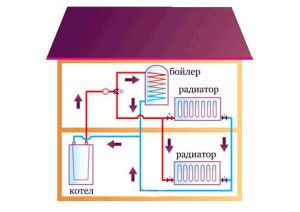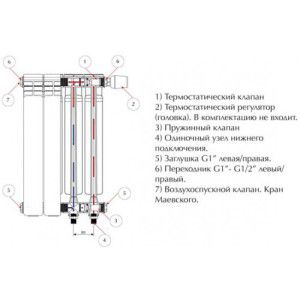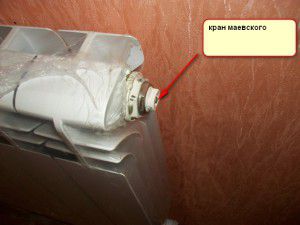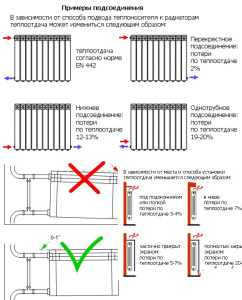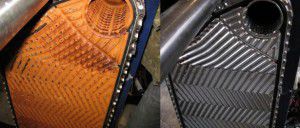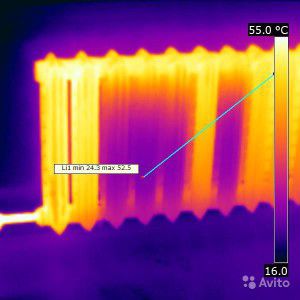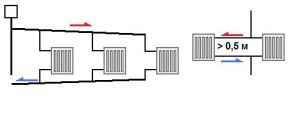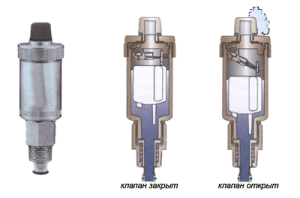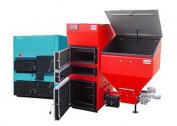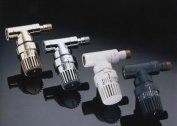A change in the temperature regime of heating can be caused by a number of internal reasons. Many of them negatively affect the efficiency of the system, increasing energy costs. In such cases, a reasonable question arises - why does not heating heat: radiators, batteries, pumps, systems? At the first stage, you need to find the causes of the problem.
Common heating problems
The principle of operation of any heating system is the effective transfer of thermal energy from an energy carrier (gas, solid fuel, diesel, etc.) to the water in the pipes. The task of heating devices (radiators, batteries, pipes) is to transfer the received heat to the room.
And if the heating battery does not heat up - the reasons for this can be found both in the design itself and in the parameters of the system as a whole. Consider the common reasons for reducing the efficiency of the heating system:
- Low efficiency of the boiler heat exchanger. Water does not heat up to the desired temperature;
- A specific heating battery does not heat well. Possible causes - improper installation, the formation of air jams;
- Change in the technical characteristics of the system - an increase in hydrodynamic resistance in individual sections of the pipeline, a decrease in the pipe bore diameter, etc. Most often, the consequence of such phenomena is that the circulation pump of heating is very hot.
In some cases, not one, but several of these problems arise. Often the main is the root cause of the following. So, the formation of an air congestion affects the increase in hydrodynamic resistance, and as a result - there is an increased load on the circulation pump.
Do not install decorative grilles on the radiator with poor heating or cover it with a panel. Thus, the already small efficiency of its work will be artificially reduced.
Heating radiator does not heat up
Most often, problems with normal heat dissipation occur in radiators. This is explained by their specific design - the coolant does not move along one pipe, as in a transportation line, but is distributed over several.
In what cases does the heating radiator not heat? There are several factors that directly affect the proper functioning of the battery.
Air congestion in heating
There are several reasons for the appearance of air jams in the heating system - excess temperature, evaporation of water, etc. It is important that the consequence of this is the appearance of places in the highway that are not filled with coolant. Most often these are radiators. To eliminate them, it is necessary to install a Maevsky crane - an air valve that releases excess air from the device.
How to determine why a radiator is not warming well? The simplest method is the temperature difference on the surface. At the place of formation of the air congestion, it will be significantly lower, thereby interfering with the normal passage of the coolant. To eliminate it, you must perform the following steps:
- With the help of a screwdriver or a rotary lever, the Mayevsky crane is opened;
- Add water to the system until the coolant begins to flow out of the tap along with air;
- Shut off the water supply.
After starting the heating system, the surface of the radiator should heat evenly. Otherwise repeat the procedure.
For normal heating of the heating radiator, an adjustment thermostat must be installed. Depending on the set temperature, it will automatically adjust the volume of the coolant.
Incorrect installation and limescale in pipes
The efficiency of its operation depends on the correct installation of the radiator. It should not be inclined relative to the plane of the floor and wall. If this condition has not been met, then the question will inevitably arise - why the heating battery does not heat up.
To verify the correct installation of the radiator, you can take the standard building level. If the upper plane of the battery has deviations, re-install it. It is best to use new reinforced mounts for this.
If, after this, the question of why the heating radiator is not heating remains unresolved, it is recommended to flush the heating system. This problem is relevant for old pipes and radiators made of steel and cast iron. Over time, a calcareous layer accumulates on the inner surface, which prevents the normal flow of the coolant. There are several ways to perform the flushing procedure:
- Hydraulic A special pump is connected to the system circuit, which creates a large pressure of water. Under the influence of this force, the scale breaks into small fractions and is retained in the pump filter;
- Chemical. Special additives act on limescale, which loses uniformity and peels off the inner surface. Subsequently, a hydraulic flushing is performed to remove residual debris.
Experts recommend using a comprehensive method to solve the problem in which the heating battery does not heat up. After checking the correct installation, the system is flushed and then filled correctly with the Mayevsky tap open.
If the two-pipe heating system does not heat due to clogged pipes, you need to carefully select the cleaning technology. For polypropylene pipelines, chemical cleaning cannot be done.
The boiler does not heat the batteries
Often, a two-pipe heating system does not heat due to the low heat transfer rate of the boiler’s exchange circuit. This leads to a decrease in temperature and, as a consequence, a loss in the overall system performance. Not every boiler model provides a simple way to dismantle the heat exchanger. If heating does not warm well due to the appearance of plaque on the internal elements of the boiler, you can flush without this procedure. To do this, you need a pump with a filtration system. The cleaning procedure is as follows:
- Disconnecting the boiler from the general heating system;
- Connection to the inlet and outlet pipe of the pump hoses;
- Refueling a special cleaning fluid in the boiler heat exchanger;
- With the help of a centrifugal pump, the rate of passage of fluid through the boiler increases.
After this, the heating batteries should not heat badly. Particular attention should be paid to flushing fluid. It should not harm the metal elements of the boiler and system. Therefore, at the end of the procedure, the entire system should be rinsed with distilled water.
In order to avoid the appearance of scale before pouring water into the heating system, it is necessary to reduce its hardness index. The use of running water is not recommended, as it contains a large amount of calcium and magnesium bicarbonates. They are the main source of limescale not only in the heat exchanger of the boiler, but also in pipes and radiators.
The best way to clean the heat exchanger is to dismantle it. So you can not only remove the entire volume of scale, but also make sure of its integrity. After this procedure, the heating system should not heat up badly.
Pipelines: causes of low heat
Failures in the heating mode are characteristic of a two-pipe heating system. In this case, the supply line does not heat, distributing the coolant along the radiators. Identification of the “problem” zone can be done by measuring the temperature on the surface of the pipes or the thermal imager.
Natural circulation
What can be related to such problems? If the heating does not heat well, non-compliance with the slope of the main is possible. This applies only to systems with natural circulation. According to the standards, the slope of the pipes should be 10 mm per 1 m. In addition, the direction is taken into account - from the riser to the radiators. For the return pipe, the slope must be towards the boiler.
At the first stage, it is necessary to measure this indicator using the building level. If it complies with the norm, but the heating radiator does not heat up, there is a possibility of air jams. In this case, an integrated approach is recommended, which includes the following steps:
- Angle measurement. If necessary, change it to the required indicator;
- Flushing pipes to remove limescale;
- Filling the system with coolant with open Mayevsky taps on radiators.
This technique will eliminate the low heat transfer rate of the heating system.
To improve circulation in open systems, a circulation pump can be installed. If it will overheat - you need to mount an additional one. This is often necessary for branched heating systems.
Forced coolant circulation
For a system with forced movement of water in pipes, the formation of air jams can be avoided by using an air vent installed at the top of the system. In part, it functions as an open expansion tank, but it does not reduce the pressure in the pipes to a critical level. Its absence is an indirect cause of poor heating of the heating radiator.
The specificity of closed heating systems lies in the optional observance of the level of installation of pipes. However, when the critical level of heating of the coolant is exceeded, steam is released, which is the main cause of air congestion. Since air has a lower density than water, it will concentrate in the upper region of the pipeline sections. If heating radiators in a closed system do not heat up well, the reason may be a decrease in the volume of coolant in the pipes due to air resistance.
What needs to be done in this case? First of all, check the performance of air vents. During long periods, a simple valve may become calcareous, which makes it impossible to open it under air pressure.
In addition to this factor, the excess hydraulic resistance in the system must be taken into account. That is why the battery does not heat up in heating if the initial calculation is incorrect. Therefore, before proceeding with the installation of a new system or modernization of the old one, the calculated part of the operational and technical parameters should be performed:
- The selection of pipes of the corresponding diameter - the larger it is, the lower the hydrodynamic resistance. However, this increases the volume of water;
- The likelihood that a two-pipe heating system will not heat significantly less than that of a single-pipe heating system. Therefore, it is preferable to install radiators with parallel connection;
- The heating circulating pump is heated due to improperly selected power. It directly depends on the calculated hydrodynamic indicators.
For what reasons can the heating battery not heat up? This may be due to an improperly selected radiator model.Each of them has a certain indicator of heat transfer depending on the thermal mode of the system. These data are indicated in the instrument passport. If you choose the wrong model, then even with the perfect operation of the heating system, the radiator simply will not heat up to the required temperature.
The video shows the main causes of poor heating of the radiator for a single-pipe heating system:
